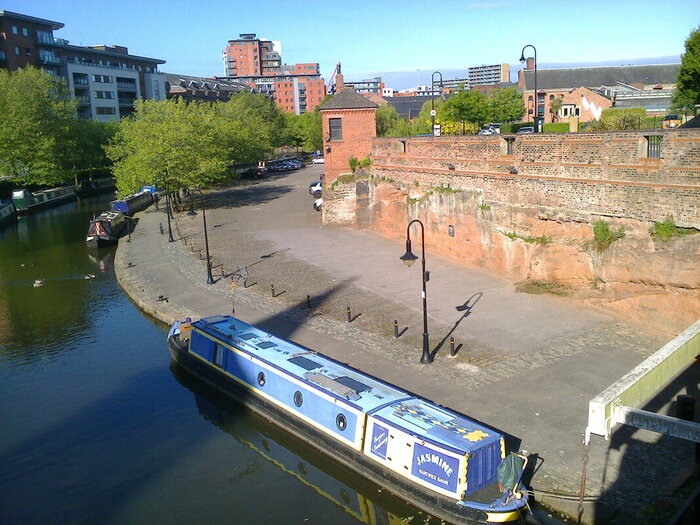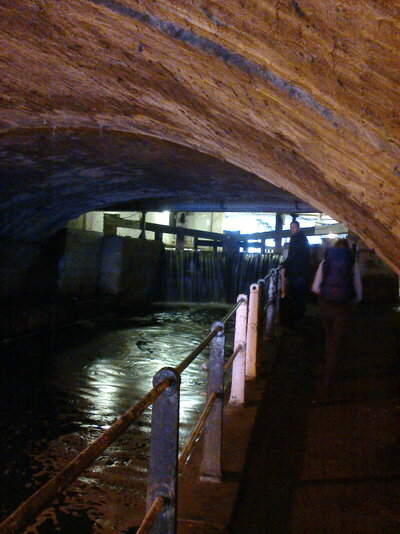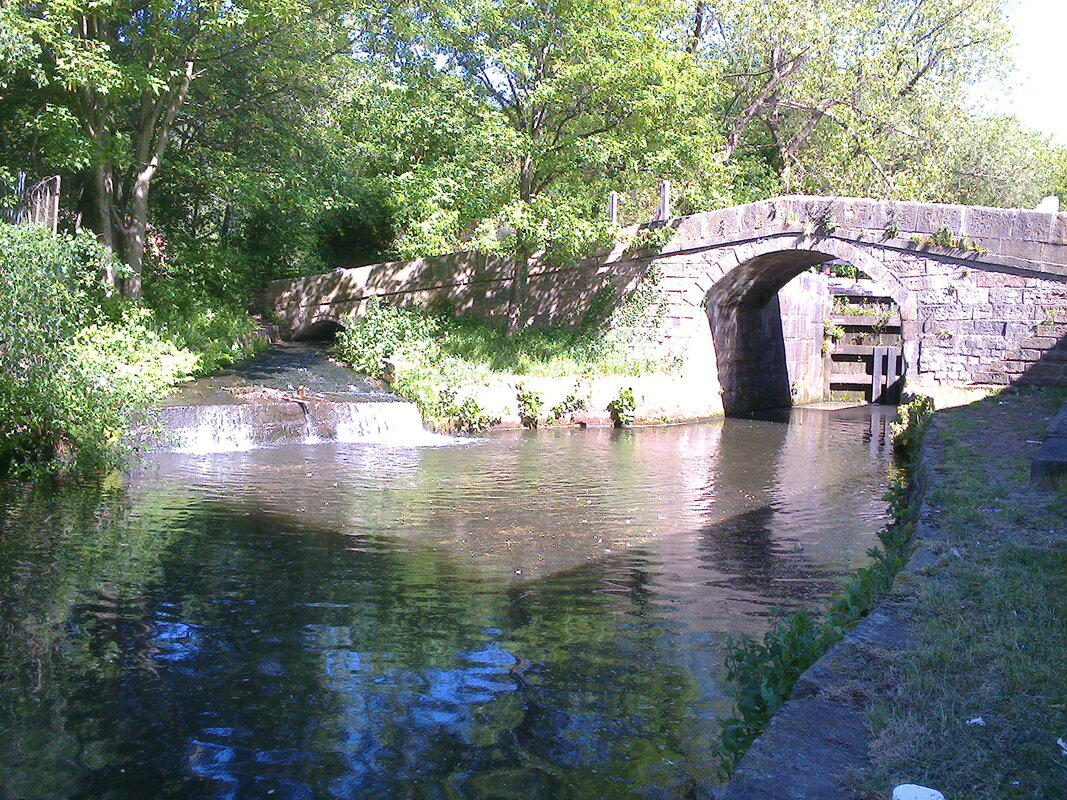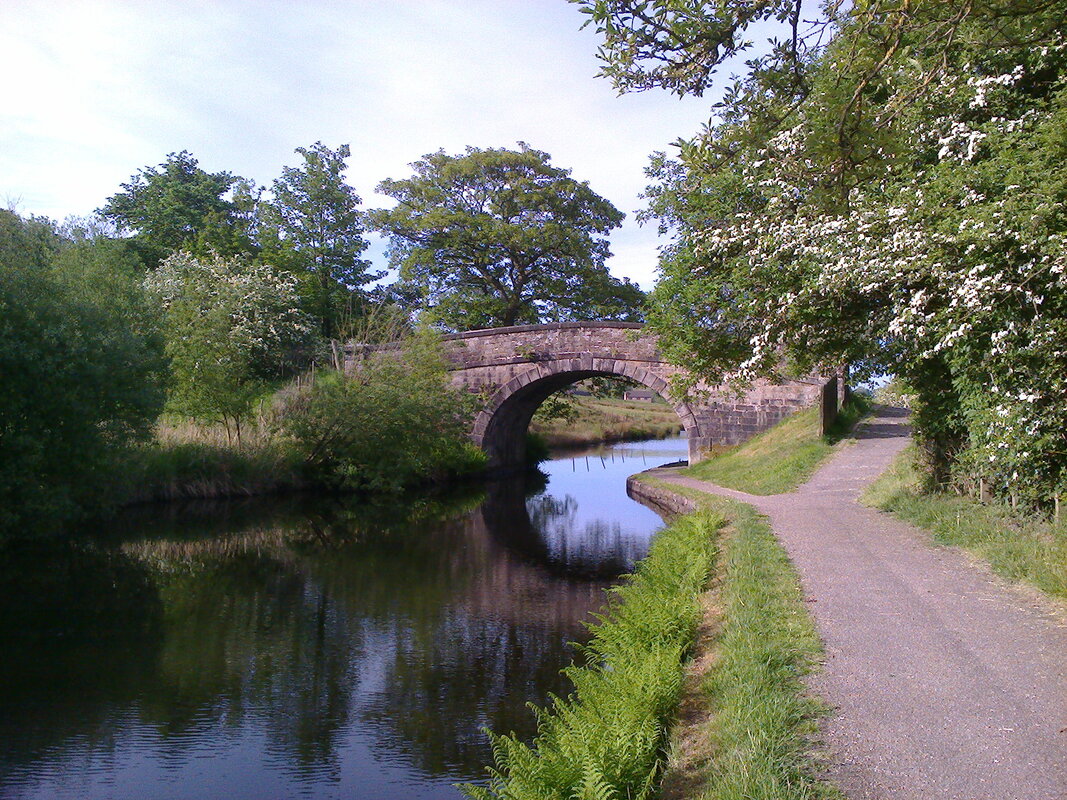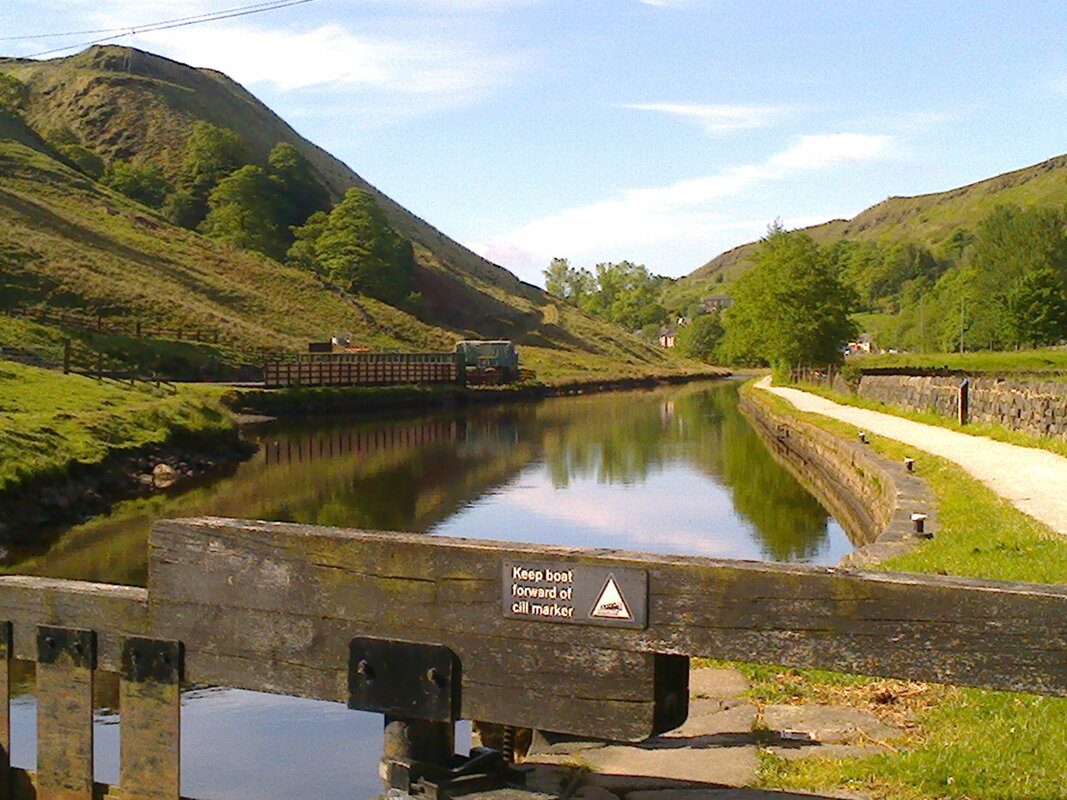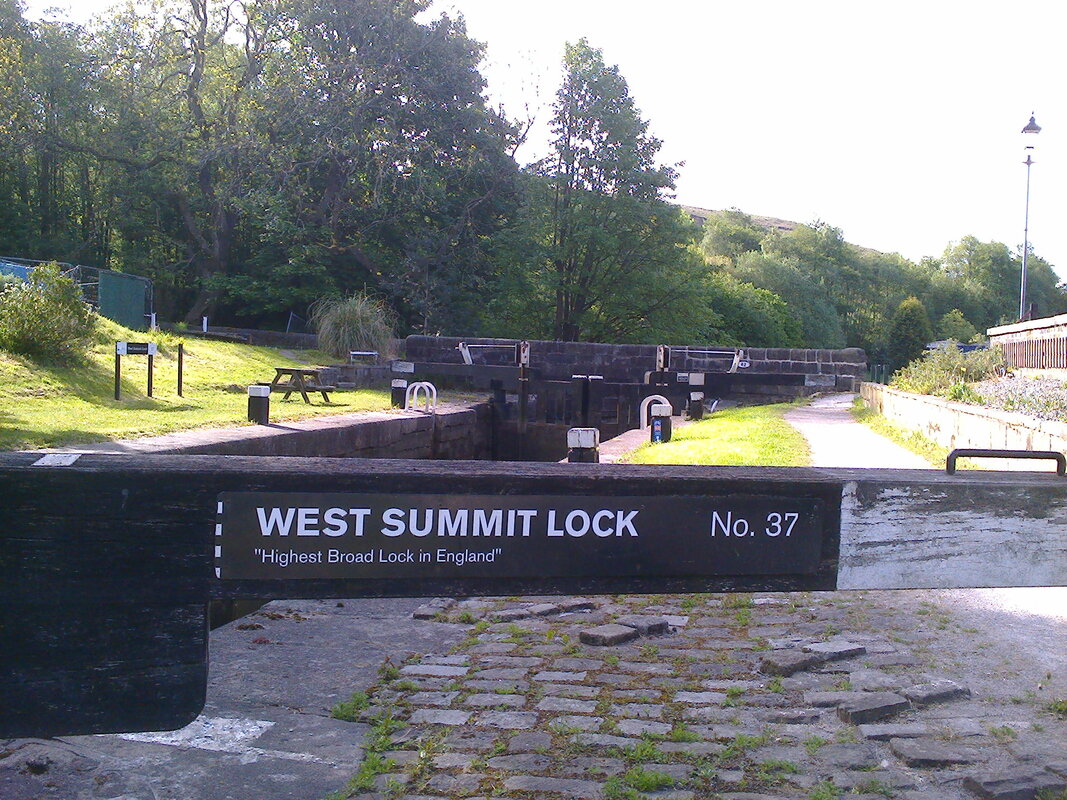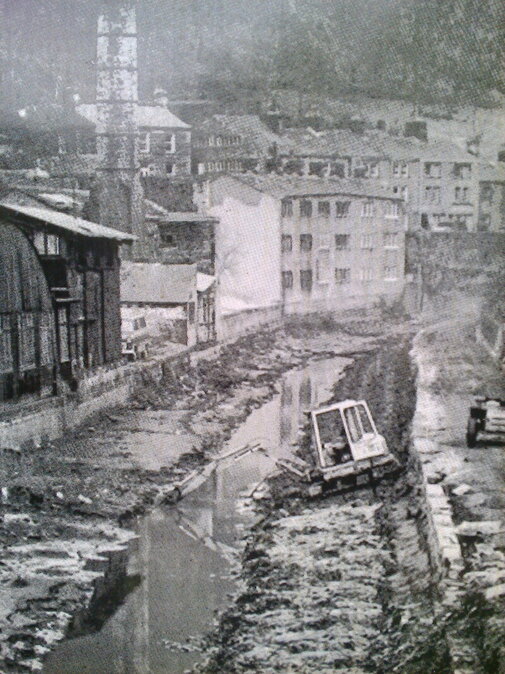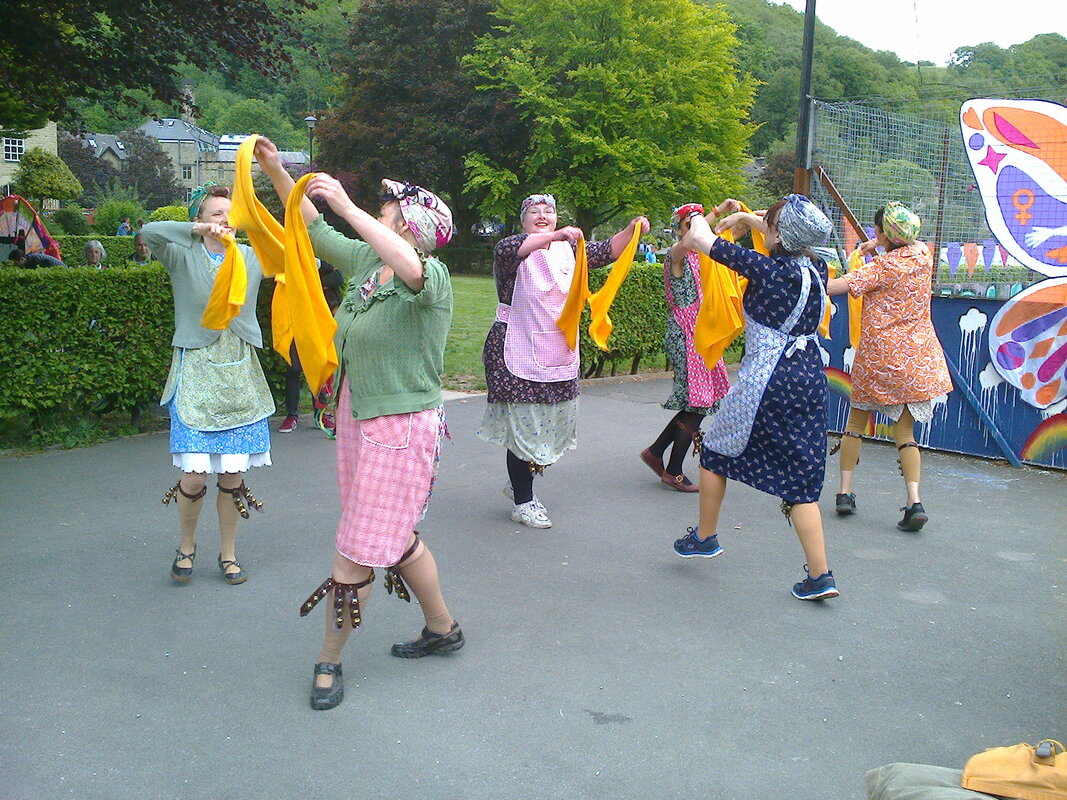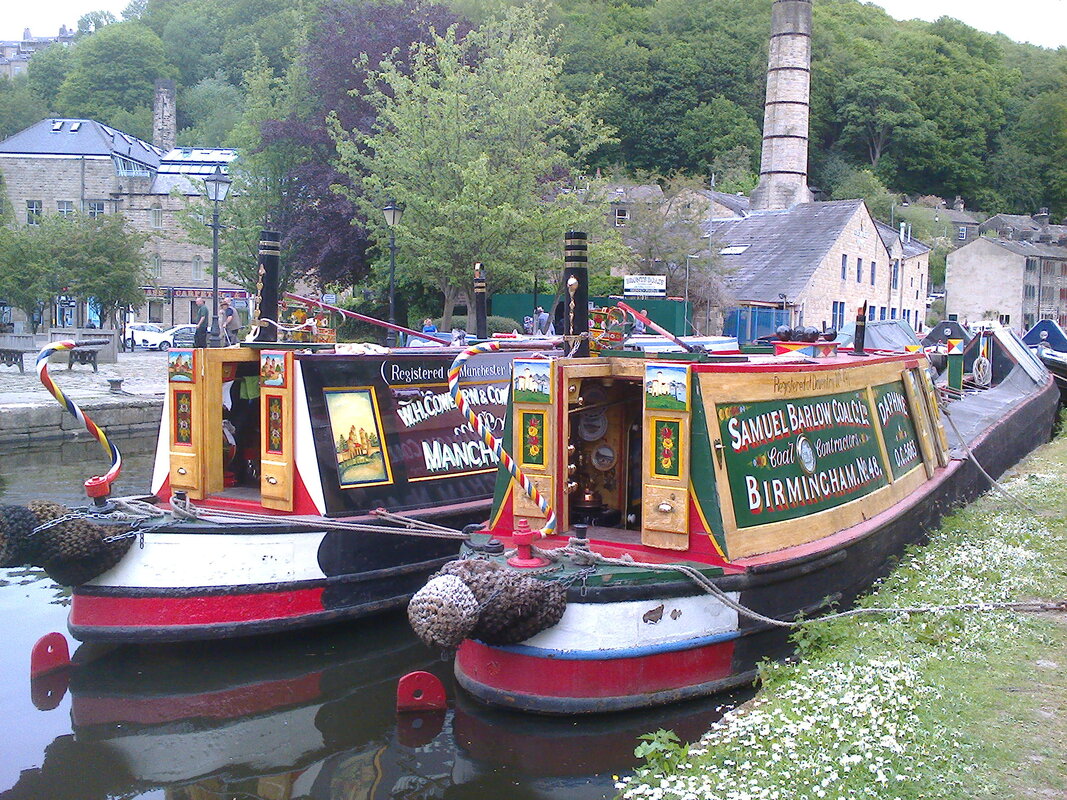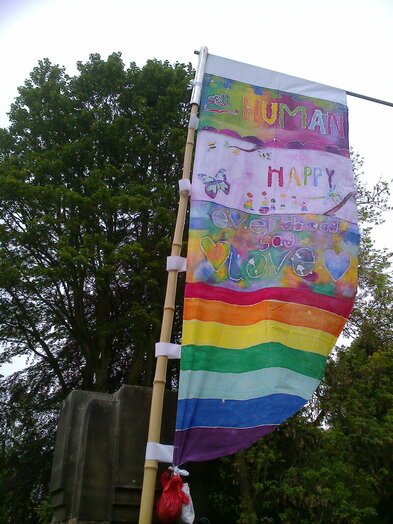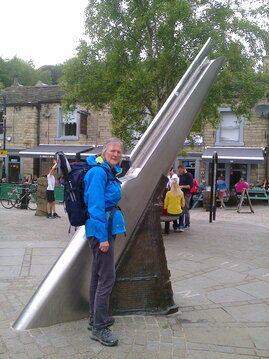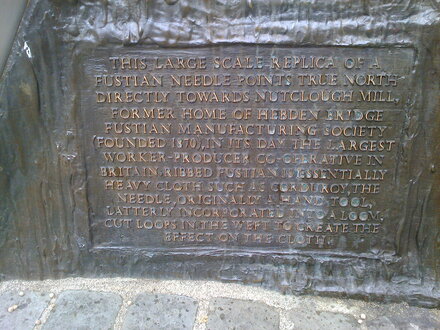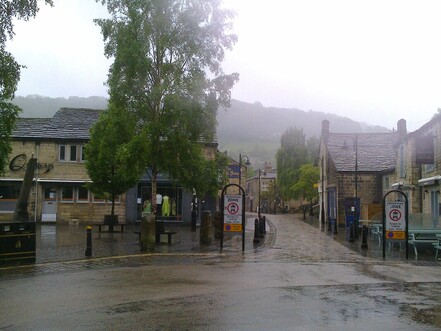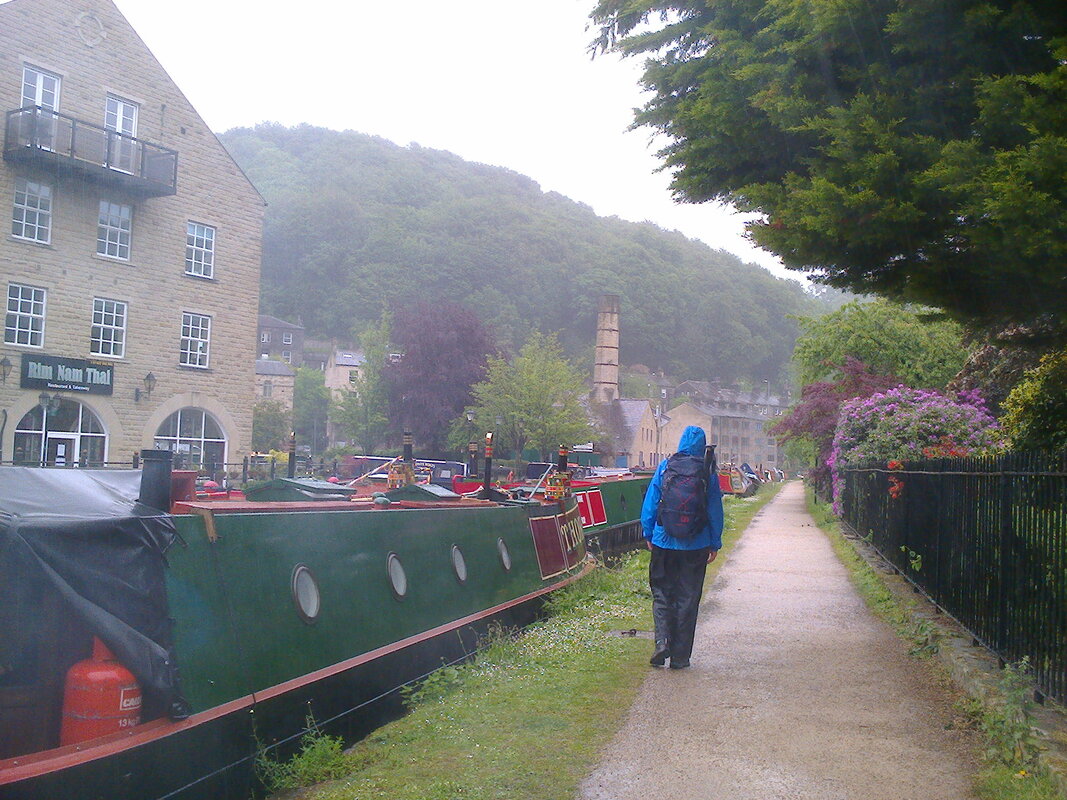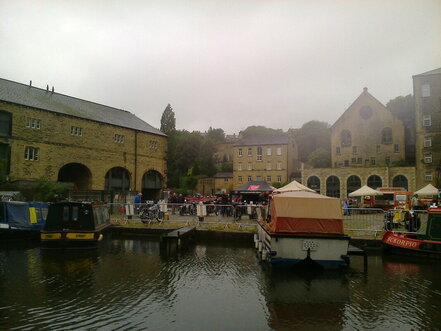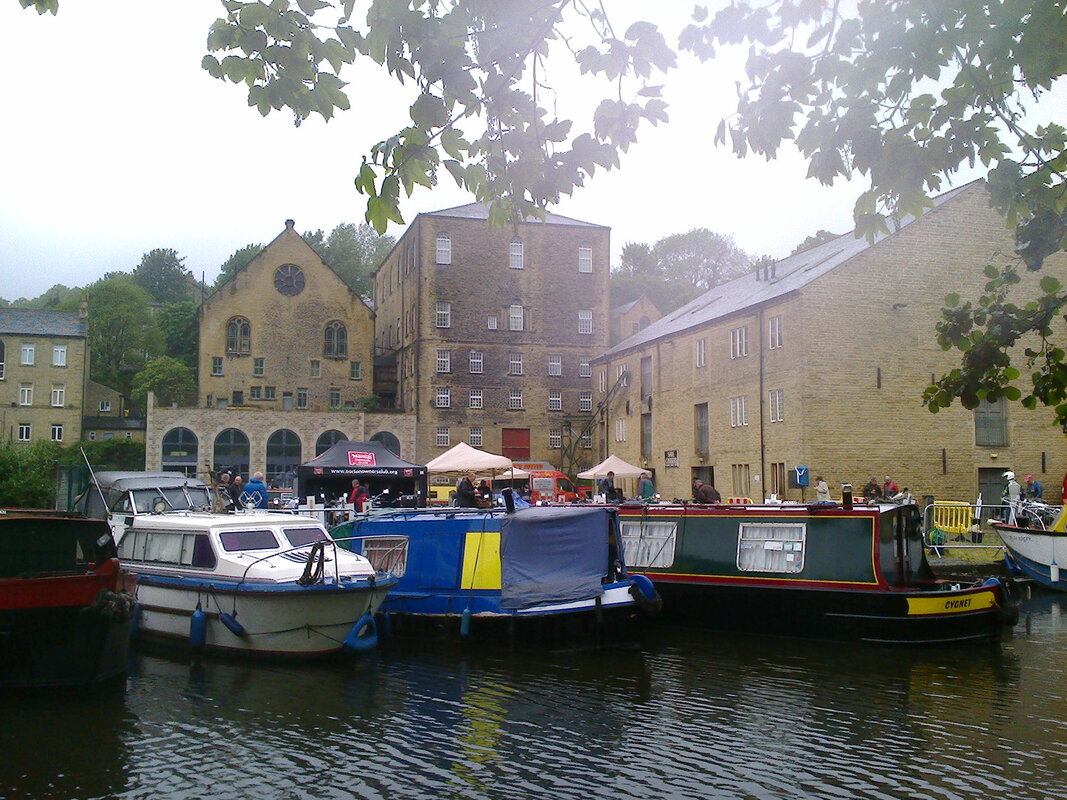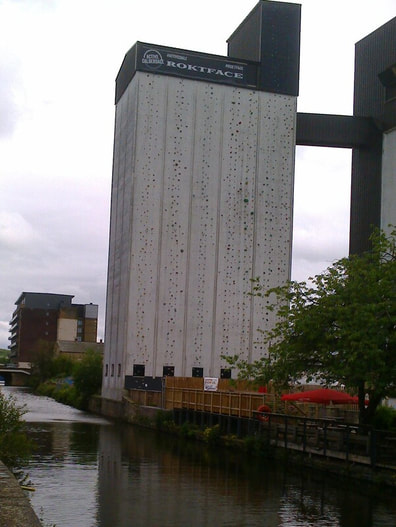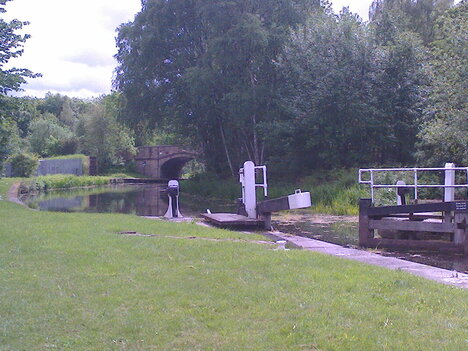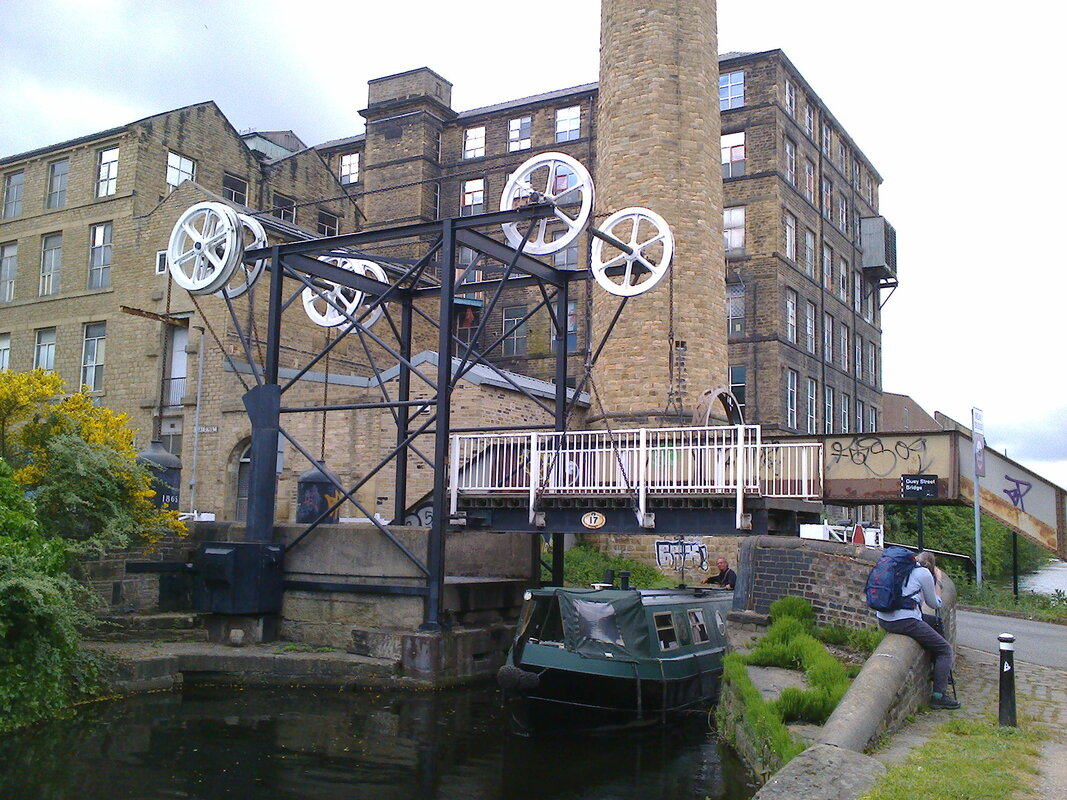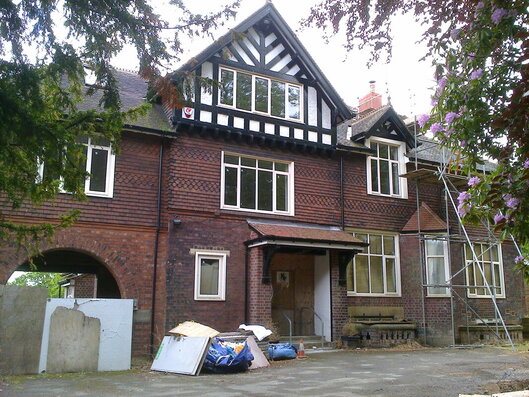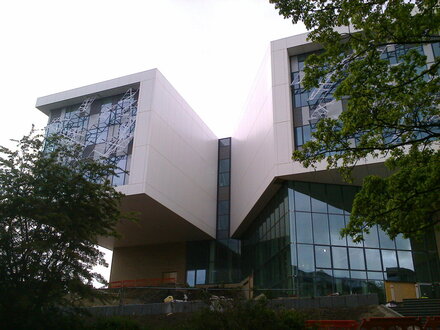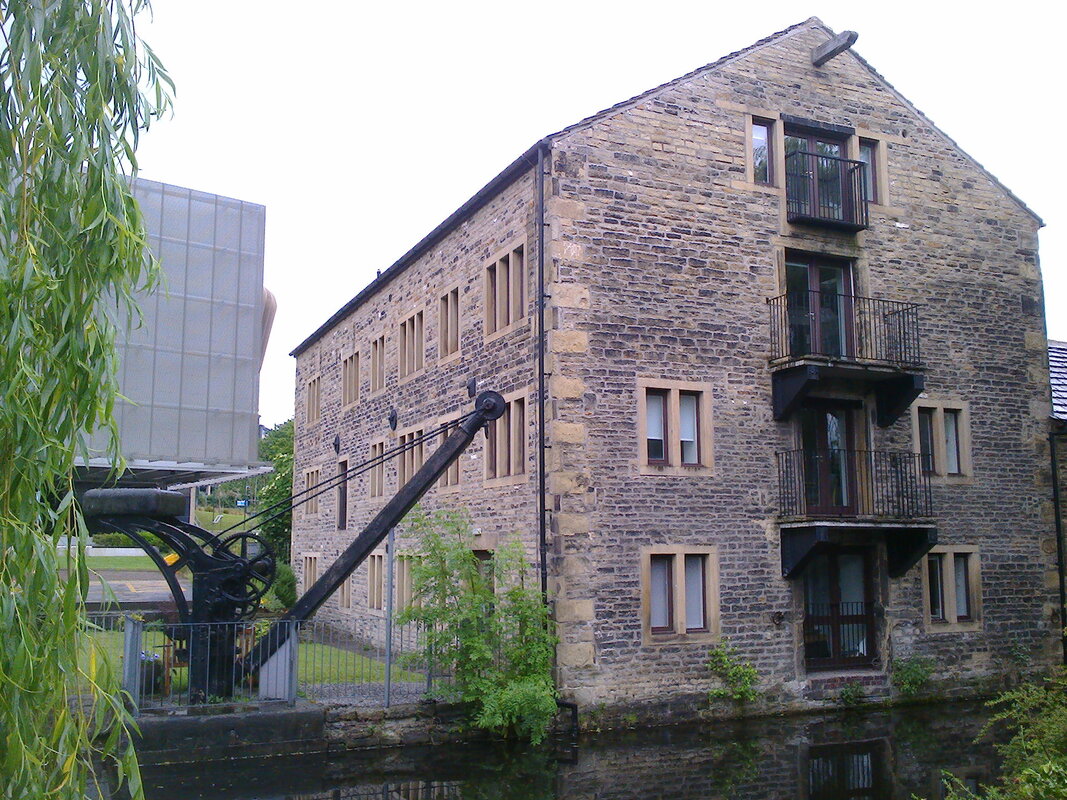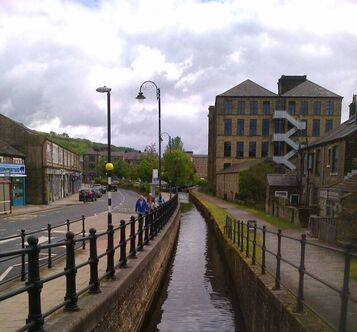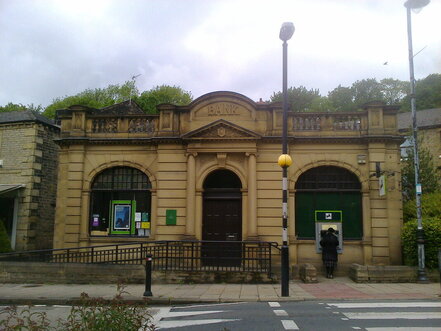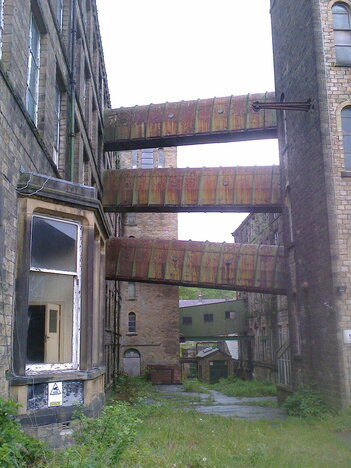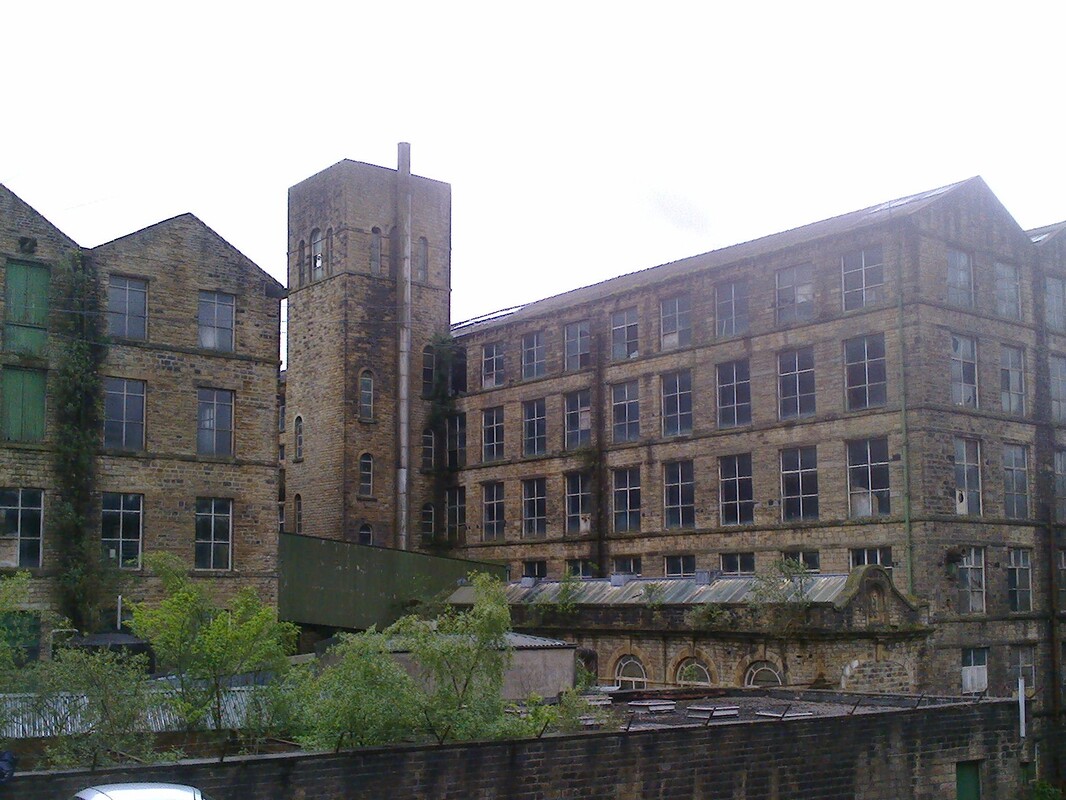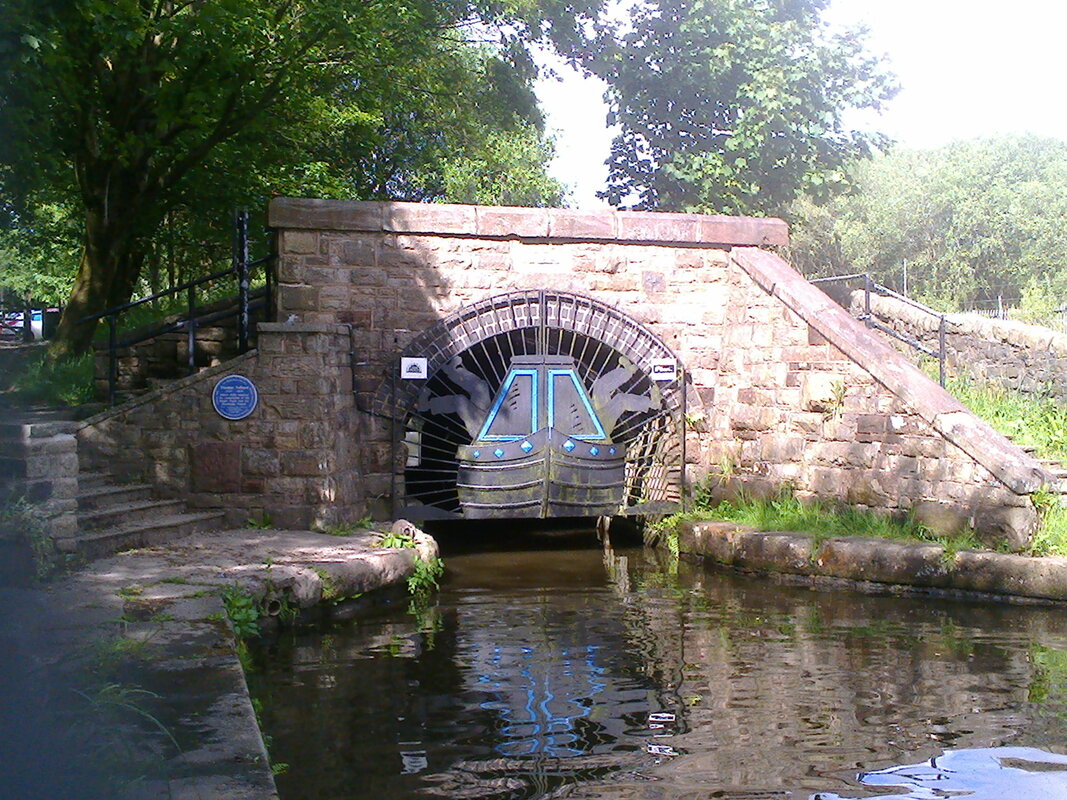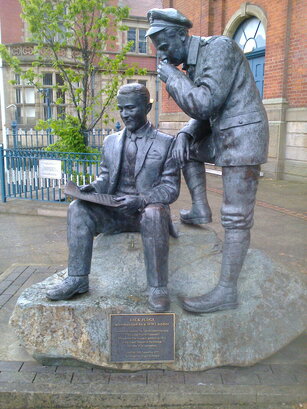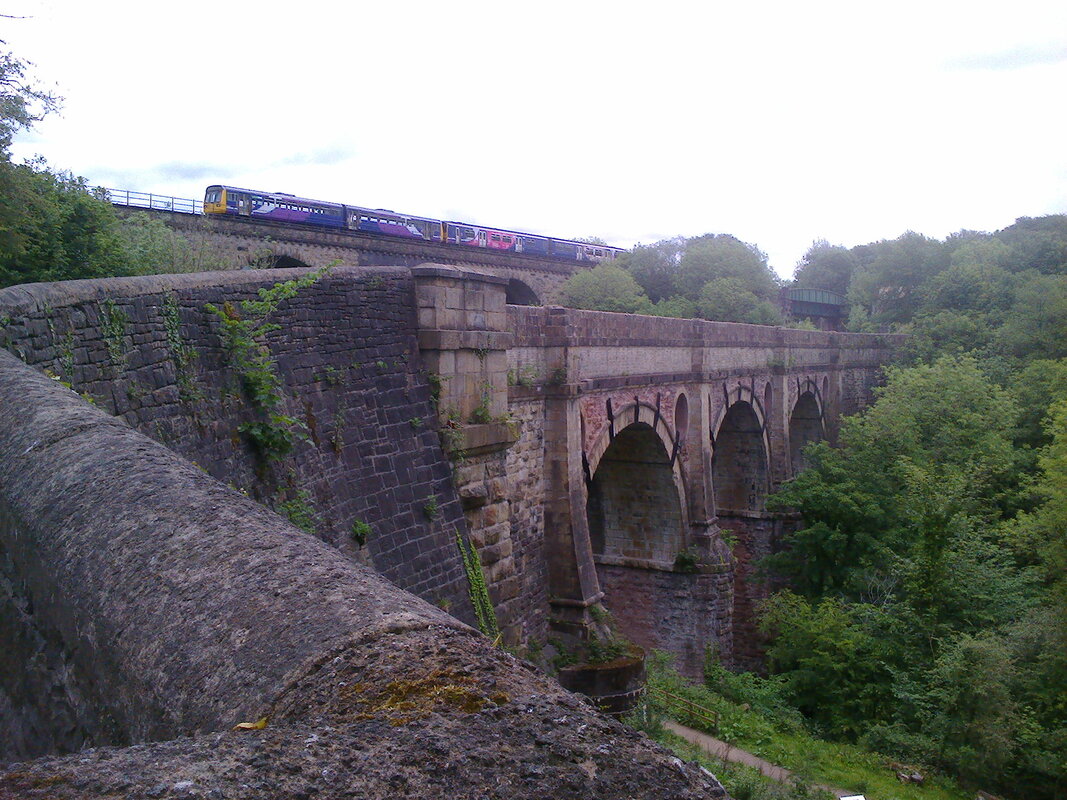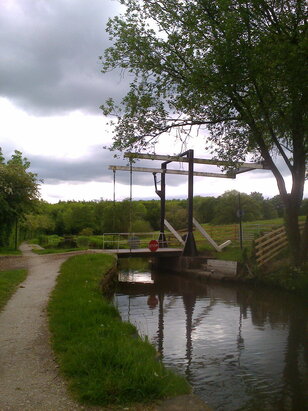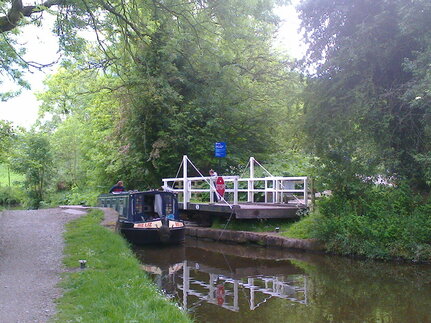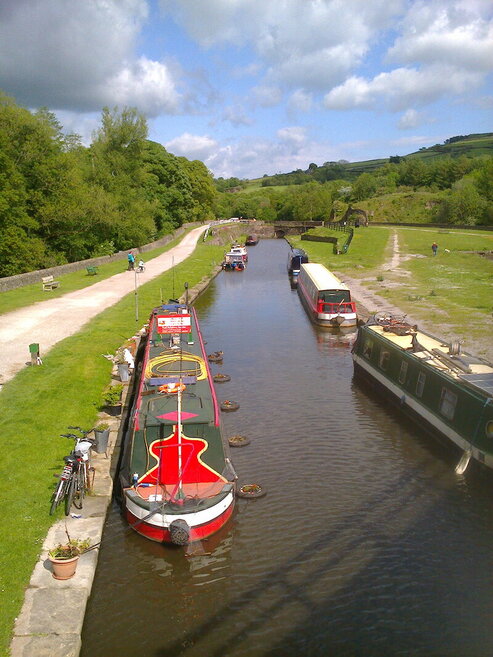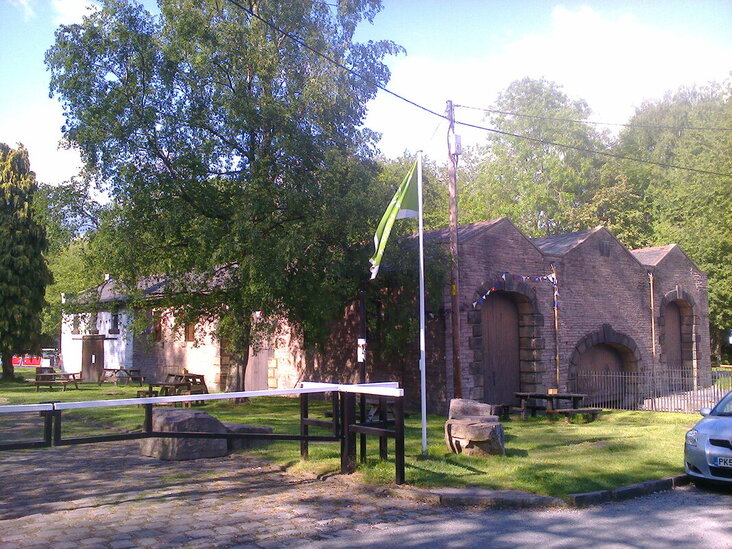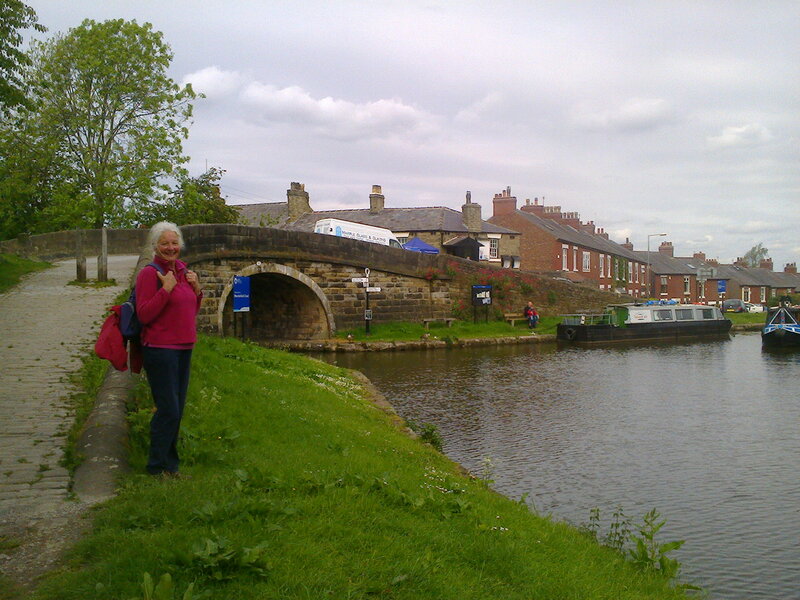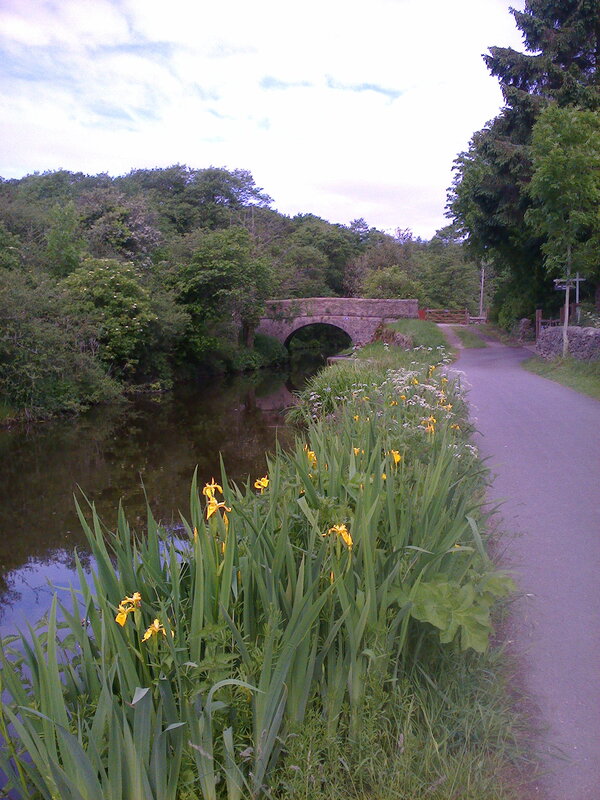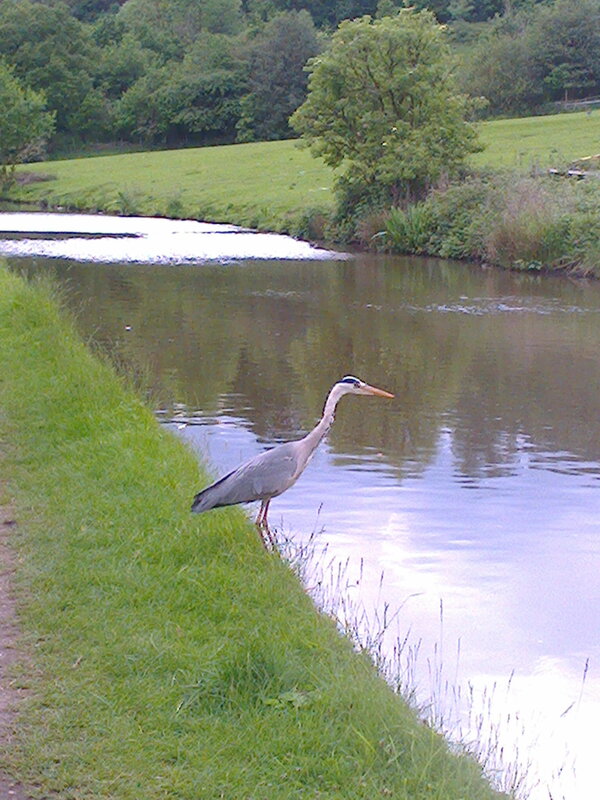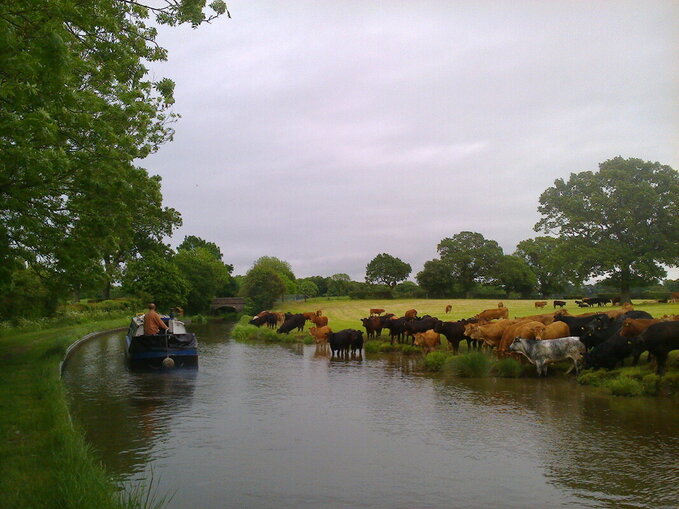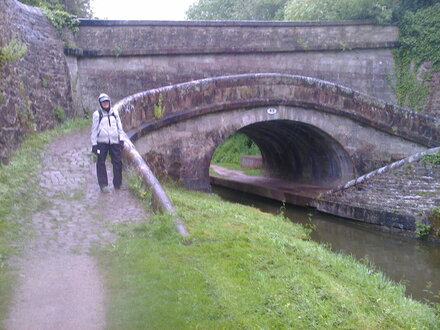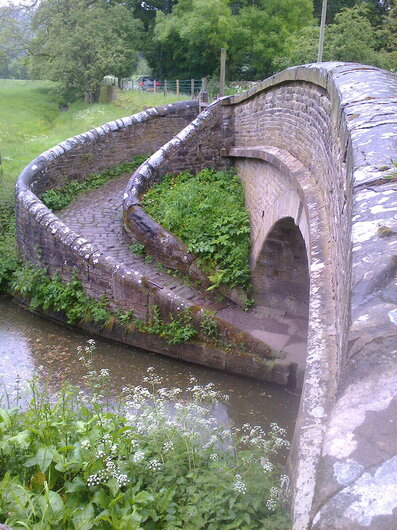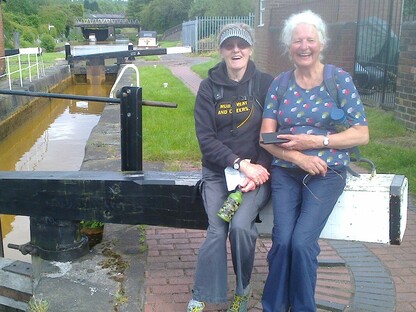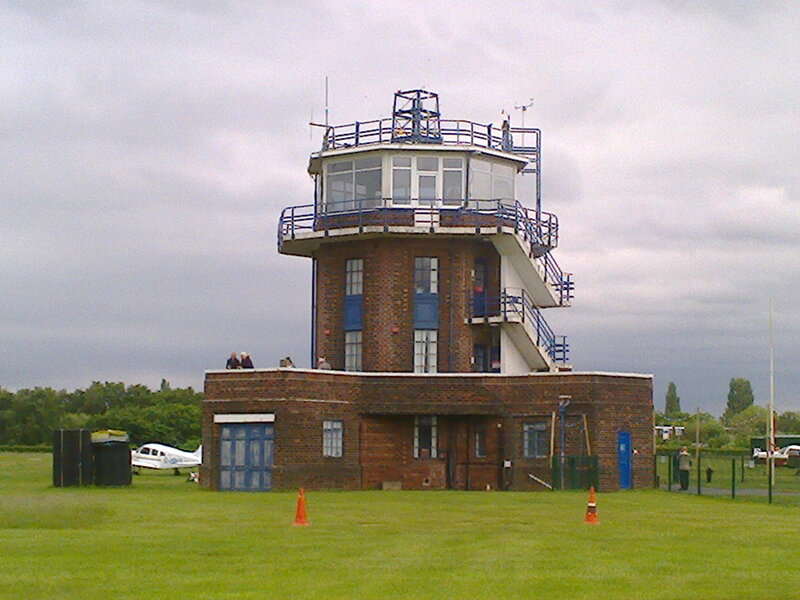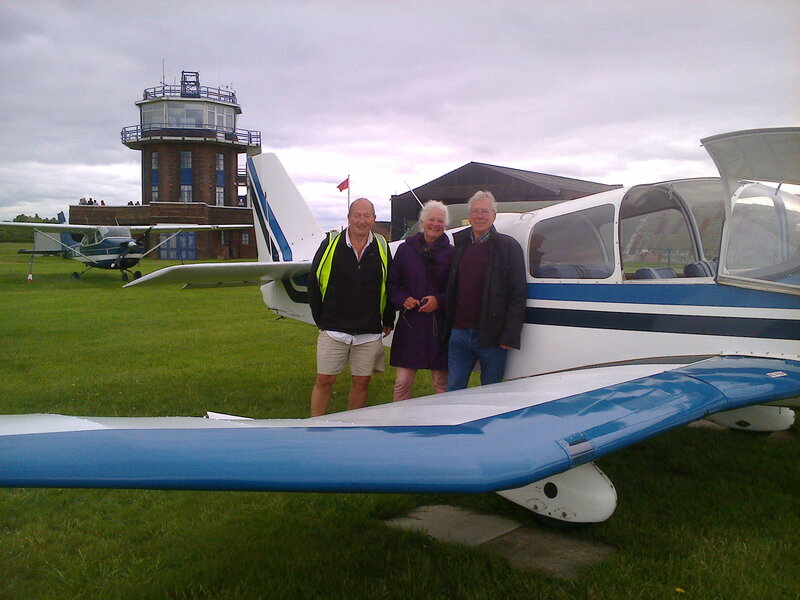r
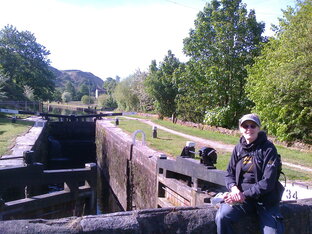
Raising funds for the Charity
‘Young Minds’
Walking the Canals - Manchester to Kidsgrove via Hebden Bridge & Huddersfield 24-30th May 2019
Day 1 Friday - Manchester to Littleborough - Rochdale Canal - 18 miles
Once again, I found myself at Castlefield, staring at that huge block of pink sandstone on which stood the Roman Fort, Mancunium, the very origins of Manchester, now surrounded by mills, waterways, gardens, 18thc. houses and 21st century blocks of flats, with the usual pubs, bars and restaurants and the huge looming presence of the Science and Industry Museum nearby.
This time I was looking down on it from the semi-reconstructed Grocers’ Warehouse where coal was lifted from the barges below by water-powered crane up to street level, a revolutionary idea at the time dreamed up by James Brindley, our resourceful engineer, in 1765, thus avoiding a time-consuming drag up the hill by cart and horse!
I had arrived early the previous day to visit the Whitworth Art Gallery* which I had missed last year. I was rather more intrigued by the new extension at the back, sun-drenched and glass panelled, over-looking a beautiful garden, than the content which varied from comparisons of Hogarth and Goya drawings through to a launch of a book about one street and its occupants in Manchester – thanks for the glass of wine by the way – and a lady tap dancing to live music silhouetted behind a back-lit screen!
It also had a display of ‘outsider’ art by artists who are self-taught and marginalised by the mainstream art world which intrigued me, archaeological finds and memoirs from the Reno Nightclub, now closed, a soul and funk cellar club in Moss Side for mixed race young Mancunians in the ‘70s and ‘80s and a collection of textiles from the Andes dug up from graves, beautifully preserved, some dating back to 300BC!
I felt quite exhausted after that! Apparently, the Whitworth is pursuing a policy of ‘Art for Social Change’. And how!
*Sir Joseph Whitworth bequeathed his fortune to the people of Manchester and part of this bequest was used to fund the museum. A famous industrialist and engineer, inventor and philanthropist. The Whitworth screw thread became the first nationally standardised system (BSW = British Standard Whitworth).
I then walked up Oxford Road which for those of you who have been, or had children at, Manchester University, will know well. I was duly impressed. What an array of buildings and learning! Very energising! I could have doffed my hat at Whitworth Hall, if I had known, named in his honour for his contribution to education. 10-15 scholarships are still being awarded every year by the Institute of Mechanical Engineers.
This time I was looking down on it from the semi-reconstructed Grocers’ Warehouse where coal was lifted from the barges below by water-powered crane up to street level, a revolutionary idea at the time dreamed up by James Brindley, our resourceful engineer, in 1765, thus avoiding a time-consuming drag up the hill by cart and horse!
I had arrived early the previous day to visit the Whitworth Art Gallery* which I had missed last year. I was rather more intrigued by the new extension at the back, sun-drenched and glass panelled, over-looking a beautiful garden, than the content which varied from comparisons of Hogarth and Goya drawings through to a launch of a book about one street and its occupants in Manchester – thanks for the glass of wine by the way – and a lady tap dancing to live music silhouetted behind a back-lit screen!
It also had a display of ‘outsider’ art by artists who are self-taught and marginalised by the mainstream art world which intrigued me, archaeological finds and memoirs from the Reno Nightclub, now closed, a soul and funk cellar club in Moss Side for mixed race young Mancunians in the ‘70s and ‘80s and a collection of textiles from the Andes dug up from graves, beautifully preserved, some dating back to 300BC!
I felt quite exhausted after that! Apparently, the Whitworth is pursuing a policy of ‘Art for Social Change’. And how!
*Sir Joseph Whitworth bequeathed his fortune to the people of Manchester and part of this bequest was used to fund the museum. A famous industrialist and engineer, inventor and philanthropist. The Whitworth screw thread became the first nationally standardised system (BSW = British Standard Whitworth).
I then walked up Oxford Road which for those of you who have been, or had children at, Manchester University, will know well. I was duly impressed. What an array of buildings and learning! Very energising! I could have doffed my hat at Whitworth Hall, if I had known, named in his honour for his contribution to education. 10-15 scholarships are still being awarded every year by the Institute of Mechanical Engineers.
It was coming up for 8am. I had met my ‘walk friend’, Susie Agnew, over the breakfast table at the Premier Inn, Deansgate and now we were setting off from Castlefield Basin where the Rochdale Canal meets the Bridgewater Canal.
We walked out through Oldham and Rochdale, notoriously familiar names! Just large yellow areas on my road map with a thin blue line between! The canal was wonderfully serene and peaceful, making its gentle climb into the Pennines to the north, blissfully unaffected by modern intrusions on either side.
We walked out through Oldham and Rochdale, notoriously familiar names! Just large yellow areas on my road map with a thin blue line between! The canal was wonderfully serene and peaceful, making its gentle climb into the Pennines to the north, blissfully unaffected by modern intrusions on either side.
We chattered our way to Slattocks Top Lock and the Ship Inn for lunch. No food though! Luckily, a handy mobile sandwich van supplied. Rake Tapas in Littleborough was our overnight stop which turned out to be a delightful ‘boutique’ hotel in a 17th c. Grade II coaching inn. Our rooms were accessed round the back with their own garden, front door and definite ‘wow’ factor. We were very happy, especially when we sat down to slow-cooked rib of beef and a glass of wine after hot baths in our Jacuzzi !
Day 2 Saturday – Littleborough to Hebden Bridge – Rochdale Canal –
14 miles
The Rochdale canal was the first of the three Pennine canal crossings, completed in 1804 and ending at Sowerby Bridge. It makes use of a perfect gap in the hills at its summit. See below!
The other two pass in tunnels.
The other two pass in tunnels.
Highest Broad Lock in England
This canal is a hard task master. 3 locks per mile over the relatively short length of 32 miles, over 90 locks. That would explain why we saw hardly any narrow boats! The last working barge carried 20 tons of wire from Manchester to Sowerby Bridge in 1937. The canal was closed in 1952. It was the M62 of its day with 50 boats a day passing through.
This canal is a hard task master. 3 locks per mile over the relatively short length of 32 miles, over 90 locks. That would explain why we saw hardly any narrow boats! The last working barge carried 20 tons of wire from Manchester to Sowerby Bridge in 1937. The canal was closed in 1952. It was the M62 of its day with 50 boats a day passing through.
The effort that went in to campaigning, raising millions of pounds and then restoring these canals in the ‘60s to ‘90s is incredible. It was a massive task often carried out by volunteers with boundless enthusiasm! How I thank them as I walk along.
The canal at Hebden Bridge before restoration!
On a weekend in September 1968, 600 volunteers cleared more than 2000 tons of rubbish from the 6 miles of the Ashton Canal!
On a weekend in September 1968, 600 volunteers cleared more than 2000 tons of rubbish from the 6 miles of the Ashton Canal!
I am now a member of the Canal and River Trust. We were whingeing to a couple of their volunteers out canvassing at Todmorden, about the tarmacked towpath which is so hard on the feet, put down for those tiresome bicyclists. Why couldn’t they have left a nice soft margin for walkers instead of smearing the whole damn thing in nasty black stuff? Unfortunately, there are very few of me and rather a lot of those lycra-clad demons on two wheels. Before I knew it I was signed up, all done in a flash on an i-pad!!
Here, we discovered the Incredible Edible Community Garden Project. A local woman planted her front garden with vegetables, knocked down her wall and put up a sign saying ‘Help Yourself’! The Incredible Edible was born, the first of its kind to share veg in the community, now spread to over 700 groups worldwide. We chatted to a girl picking some chives for her lunchtime salad from beds planted up alongside the canal. WHAT A GREAT IDEA! See www.incredibleedible.org.uk.
As we approached Todmorden, we noticed some very elegant classical stone buildings and an elaborate gothic revival Unitarian church steeple, all thanks to the local benefactors, the Fielden family. It was due to John Fielden, MP, that the Ten Hours Act of 1847 came in, limiting the maximum working day to ten hours for under 18s and women over 18! No snowflakes there then!
The canal turns east after Todmorden descending to Hebden Bridge which we made in time for lunch. As we neared, we smelt weed wafting out of some old dilapidated mill given over to artists’ studios. We knew nothing about Hebden Bridge except some TV series was filmed there. Our eyes were about to be opened.
We ended up in the park by the canal with Saturday crowds, sitting on the grass eating lunch from the café, watching female Morris Dancers dressed up as Mrs Mops. This was followed by a group of sexually indeterminate persons performing a disco-ordinated shambolic hopelessly amateurish ‘gyration’ – I can’t call it a ‘dance’ but I think that was what it was supposed to be. What had us in stitches were the two little girls next to us trying to copy them. Anyway, these persons were as pleased as punch to receive a round of hearty applause. Not from us, I may add!
Here, we discovered the Incredible Edible Community Garden Project. A local woman planted her front garden with vegetables, knocked down her wall and put up a sign saying ‘Help Yourself’! The Incredible Edible was born, the first of its kind to share veg in the community, now spread to over 700 groups worldwide. We chatted to a girl picking some chives for her lunchtime salad from beds planted up alongside the canal. WHAT A GREAT IDEA! See www.incredibleedible.org.uk.
As we approached Todmorden, we noticed some very elegant classical stone buildings and an elaborate gothic revival Unitarian church steeple, all thanks to the local benefactors, the Fielden family. It was due to John Fielden, MP, that the Ten Hours Act of 1847 came in, limiting the maximum working day to ten hours for under 18s and women over 18! No snowflakes there then!
The canal turns east after Todmorden descending to Hebden Bridge which we made in time for lunch. As we neared, we smelt weed wafting out of some old dilapidated mill given over to artists’ studios. We knew nothing about Hebden Bridge except some TV series was filmed there. Our eyes were about to be opened.
We ended up in the park by the canal with Saturday crowds, sitting on the grass eating lunch from the café, watching female Morris Dancers dressed up as Mrs Mops. This was followed by a group of sexually indeterminate persons performing a disco-ordinated shambolic hopelessly amateurish ‘gyration’ – I can’t call it a ‘dance’ but I think that was what it was supposed to be. What had us in stitches were the two little girls next to us trying to copy them. Anyway, these persons were as pleased as punch to receive a round of hearty applause. Not from us, I may add!

